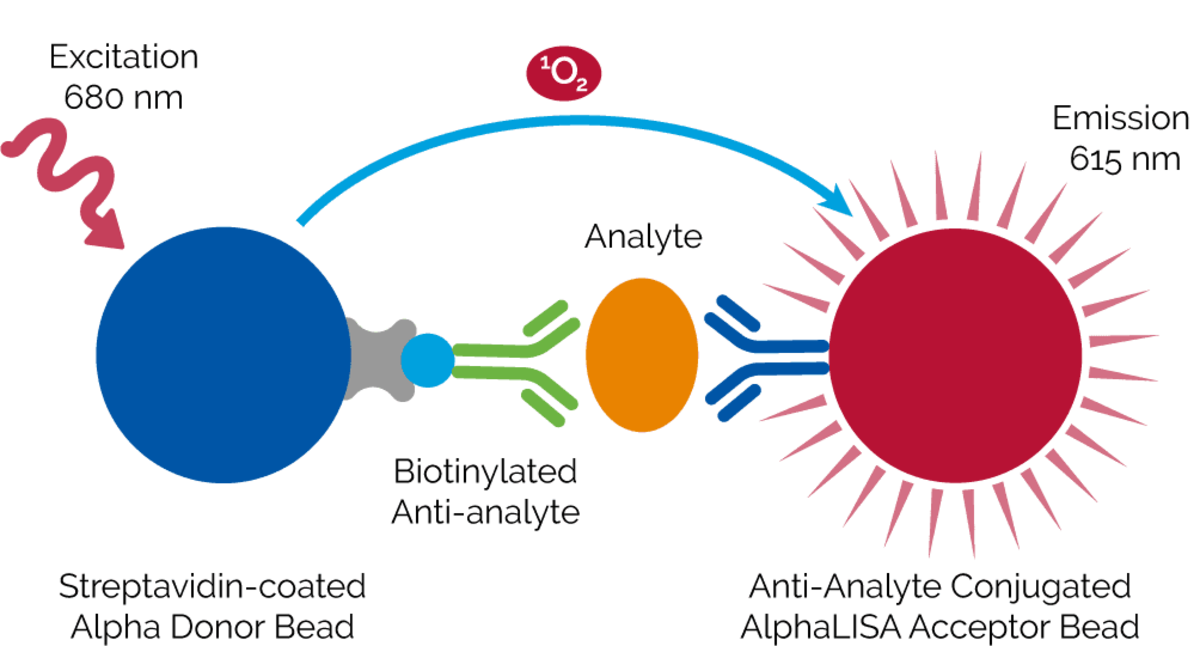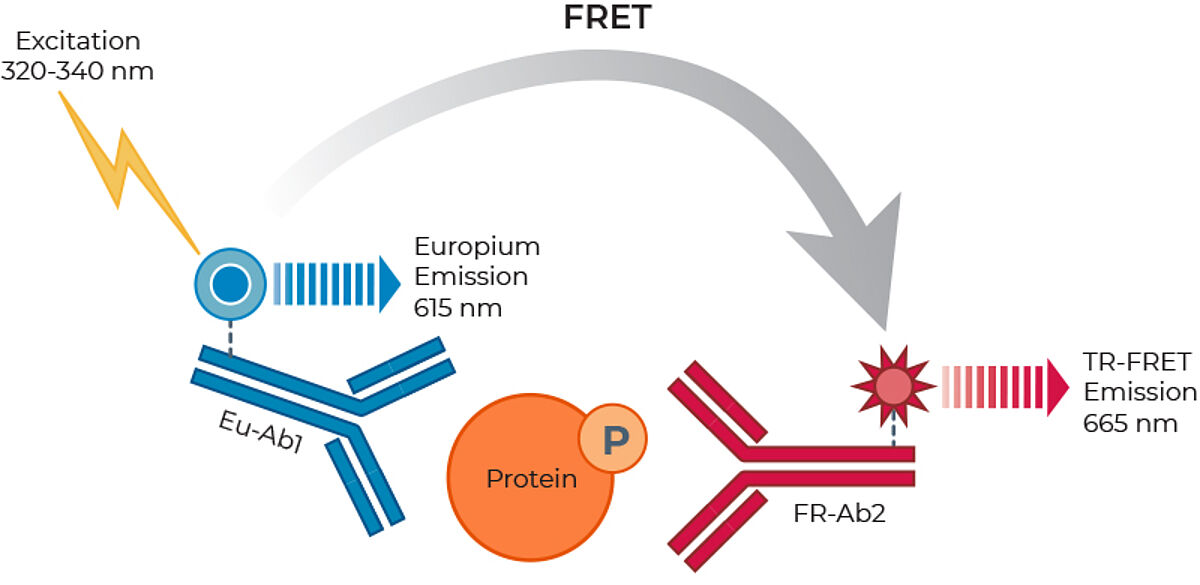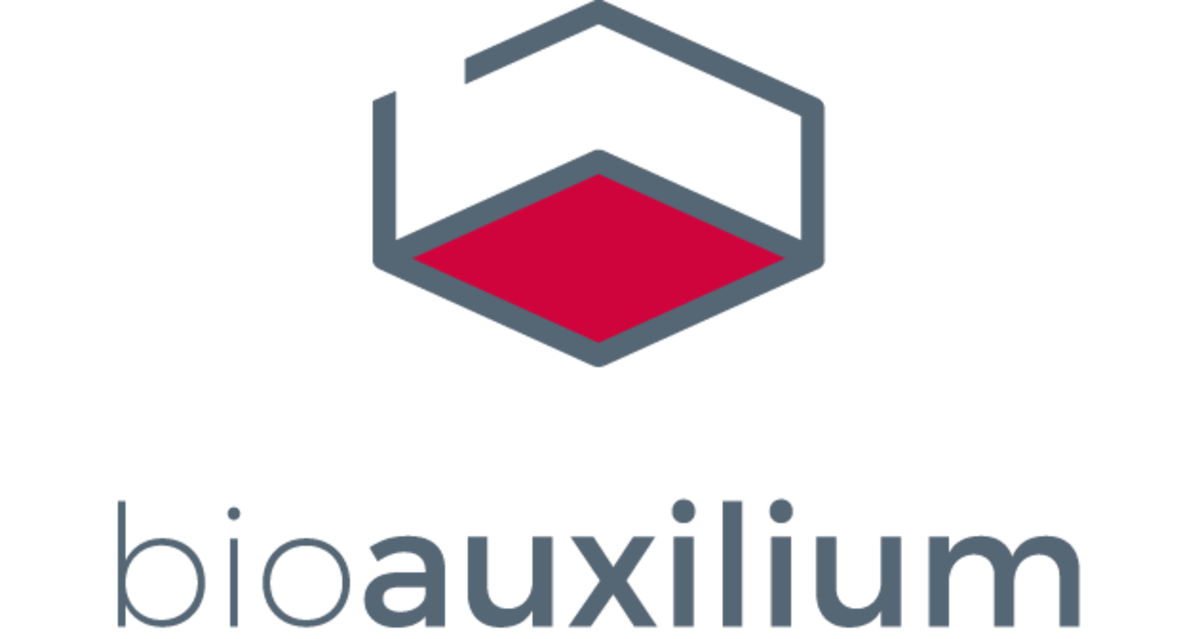It has been over 50 years since enzyme-linked immunosorbent assay (ELISA) was first described in the literature. During that time, the technique has evolved, and advanced ELISA-based technologies are now available that offer several advantages over the original method.
Sandwich ELISA principles
An ELISA can be configured in one of several main ways: direct, indirect, sandwich, and competitive ELISA. Of these, sandwich ELISA is the most common. During a sandwich ELISA, an analyte-specific antibody is bound to the wells of a microplate, which are then blocked to prevent non-specific binding. Next, controls and test samples are introduced and the analyte is captured from solution. After washing to remove any unbound material, a second analyte-specific antibody is added. This may either be labeled with an enzyme or fluorophore reporter, or be unlabeled and thus require further washing and the subsequent addition of a labeled secondary antibody for target detection. The main advantage of sandwich ELISA is that it provides high specificity by using two antibodies (each of which recognizes a different epitope) to bind the target.
What is AlphaLISA®
AlphaLISA® technology was developed by PerkinElmer as a superior alternative to a conventional sandwich ELISA. In an AlphaLISA® assay, a biotinylated anti-analyte antibody is attached to a streptavidin-coated donor bead and a second anti-analyte antibody is attached directly to an acceptor bead. When the analyte is present in the sample, the beads are brought close together. This allows for the transfer of singlet oxygen from the donor to the acceptor following donor excitation, causing the acceptor to emit light via a chemiluminescent reaction. As well as providing high sensitivity by using a luminescent readout, AlphaLISA® reduces hands-on time by eliminating the need to perform wash steps. In addition, sample volumes can be as little as 5 µL and, by using different bead combinations, researchers have the ability to multiplex. A limitation of AlphaLISA® is that the reagents are expensive.

What is THUNDER™ TR-FRET?
THUNDER™ TR-FRET is another advanced form of ELISA, which was developed by Bioauxilium. To understand how the technology works, recall that Förster resonance energy transfer (FRET) occurs when two fluorophores are in close proximity, typically as a result of being attached to two different analyte-specific antibodies. Provided the emission spectrum of the donor fluorophore overlaps with the excitation spectrum of the acceptor, and both antibodies are bound to the target, excitation of the donor allows for an energy transfer to the acceptor, causing it to emit fluorescence at a given wavelength. Time-resolved FRET (TR-FRET) is based on similar principles but uses a long-lifetime lanthanide rather than a conventional fluorophore as the donor, which decreases background fluorescence.
A THUNDER™ TR-FRET assay pairs a Europium chelate donor with a unique far-red fluorophore as the acceptor. Following donor excitation, the acceptor emits a specific TR-FRET signal at 665 nm, while any residual (non-transferred) energy produces light at 615 nm. Researchers have the option to use either the 665 nm signal, which is proportional to the amount of target present, or the 665 nm/615 nm emission ratio, which both normalizes pipetting errors and addresses compound artifacts such as light scattering due to poor solubility. Advantages of THUNDER™ TR-FRET are that it has low background and high sensitivity. It also allows for assays to be read multiple times (including after archiving) since the Europium chelate is highly resistant to photobleaching. In addition, THUNDER™ TR-FRET is compatible with most multi-mode microplate readers and is relatively inexpensive, making it easily accessible.

Factors to consider for platform selection
When deciding which ELISA platform to use, there are several important factors to consider. These include the assay sensitivity, which can be improved by using fluorescent or luminescent detection in place of a colorimetric readout, and the assay time, which can be shortened by using a homogeneous (no wash) assay format such as AlphaLISA® or THUNDER™ TR-FRET. Other critical considerations are whether an off-the-shelf kit is available for your analyte of interest, which can save time spent on assay development, and if the technology is compatible with instrumentation already present in your lab. Lastly, you may want to find out whether your chosen platform provides opportunities for multiplexing and/or the use of automation, which can reduce sample requirements, improve reproducibility, and streamline experimental workflows.
LubioScience represents some of the most trusted brands in research and works closely with partners such as Bioauxilium to offer advanced ELISA-based technologies. Contact us today to discuss how we can support your project.

BioAuxilium
Best-in-class signaling assays as ready-to-use kits based on homogeneous (no-wash, add-and-read), sensitive and robust TR-FRET technology.

